Anatomy of a Keyboard
Input devices similar keyboards have a key part in the computing and gaming landscape, and then the guts of them must be pretty cool to await at. Naturally, this ways getting our scalpels out and sending them off to the operating table, for another dissection of the anatomy of hardware.
Just equally we've seen with mice, keyboards range enormously in price these days. But they can be put into one of ii very broad categories: membrane or mechanical. These terms refer to the system used to determine the key presses, and we'll beginning with the first one.
To clack or not to clack, that is the question
Pictured below is a upkeep keyboard, similar to the endless used everyday in schools, offices, and homes. The layout is a near directly copy of IBM'due south archetype Model Chiliad 102, merely this is the case for the majority of keyboards today.
The torso and individual keys are all made from injection moulded ABS, because it's an cheap manufacturing procedure and the fabric is hard wearing.
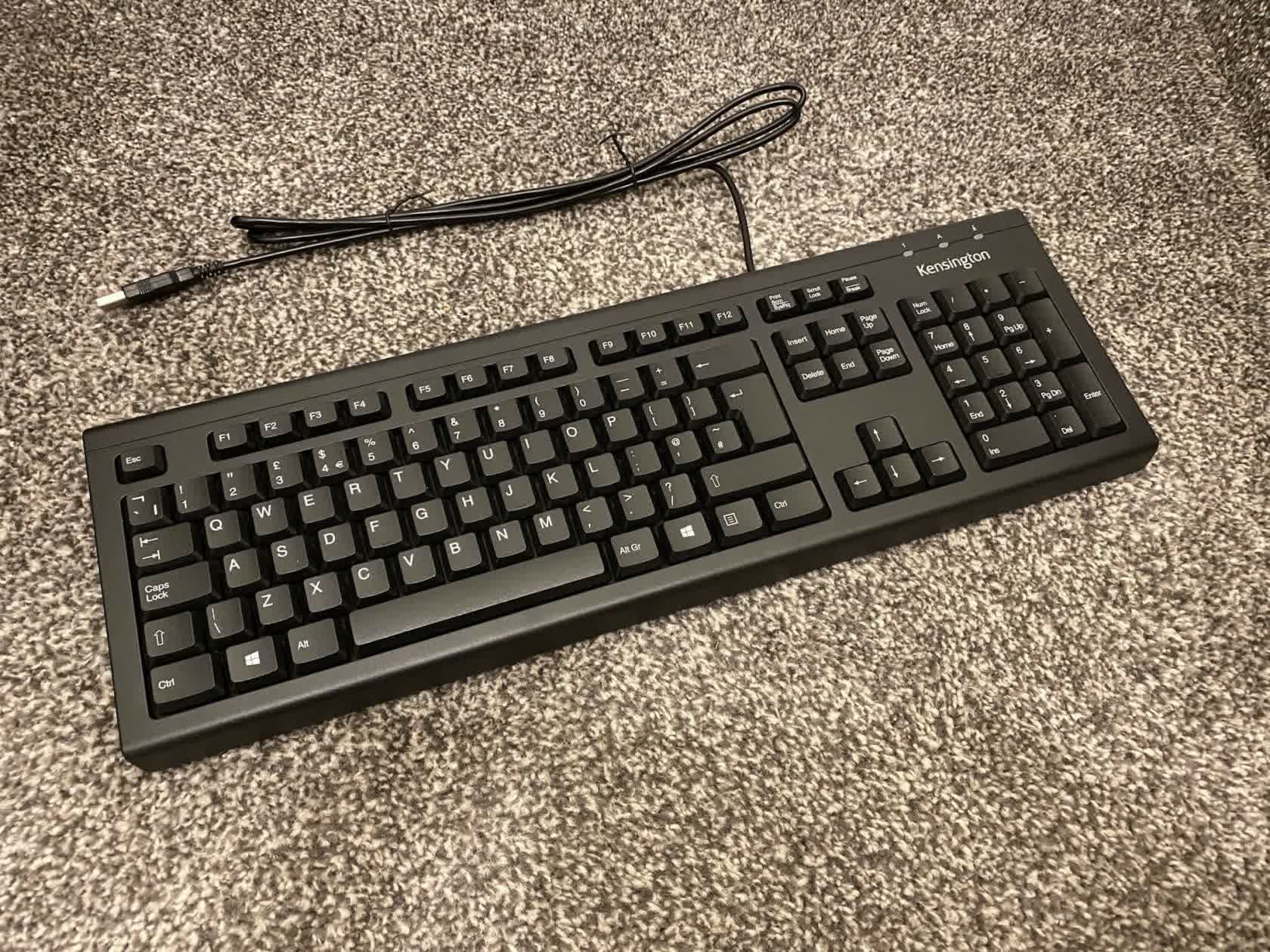
Using the keyboard gives you all the info you lot demand to determine what category it fits into. In that location's a complete absence of aural clicking and clacking when pressing the keys which points to it existence a membrane keyboard. Another clue is how it feels when pressing a key down; regardless of it being a upkeep model, at that place's a soft, mushy sensation.
This is confirmed the moment we opened it upward, with the first matter greeting your optics beingness a soft silicone layer.
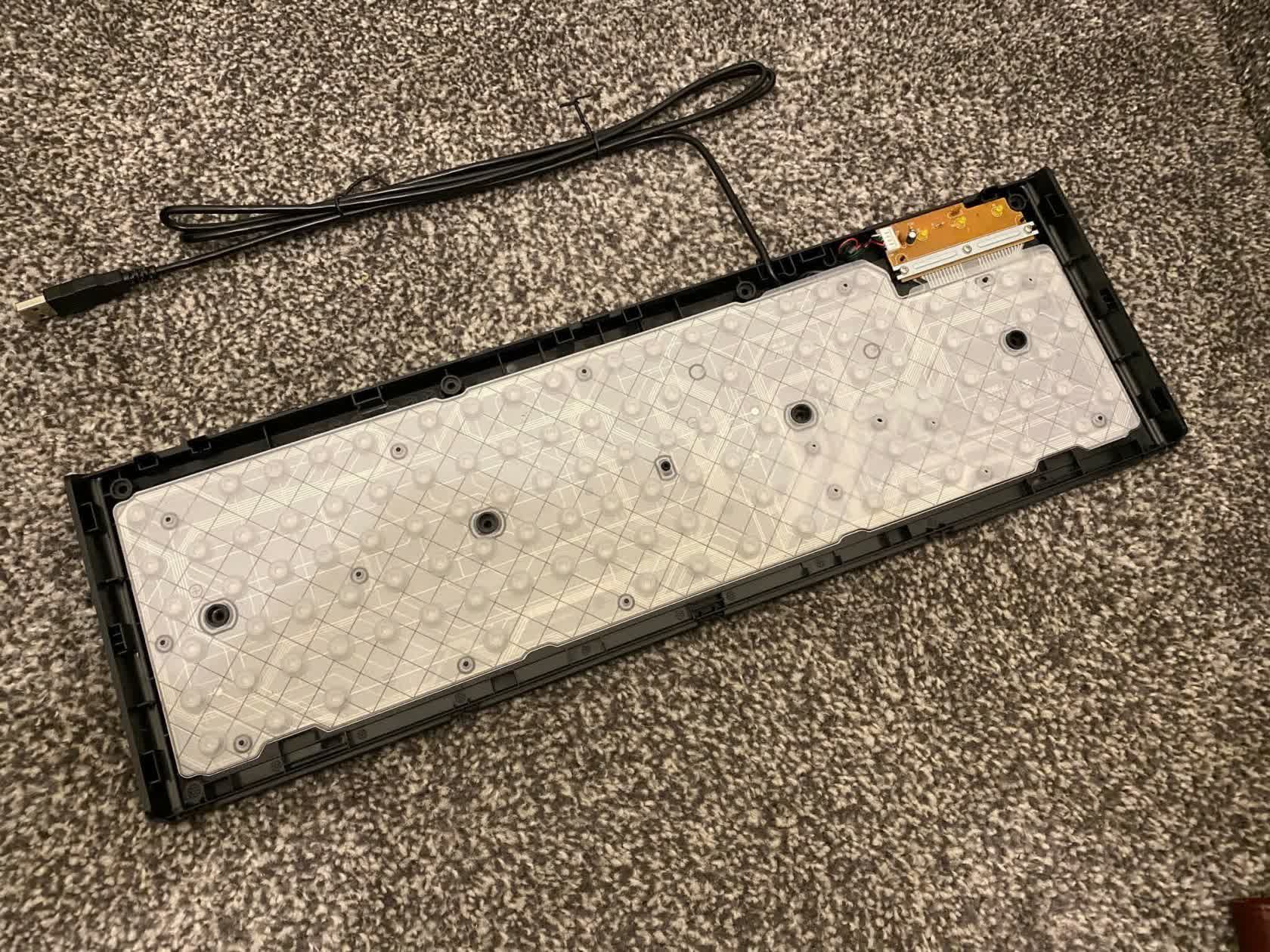
Each primal is supported by a raised part of the silicone layer, which in turn also provides the necessary resistance to the key's movement (so that you go some kind of feedback in the typing) and an eventual absorber to the cardinal's touch on (to make the whole thing feel smooth).
The downside to this is that there is no clear indication every bit to whether or non a cardinal press has been successful, until you lot come across something happen on the monitor -- for some users, the dullness of the feedback is a adept reason for not bothering with membrane keyboards in the kickoff place.
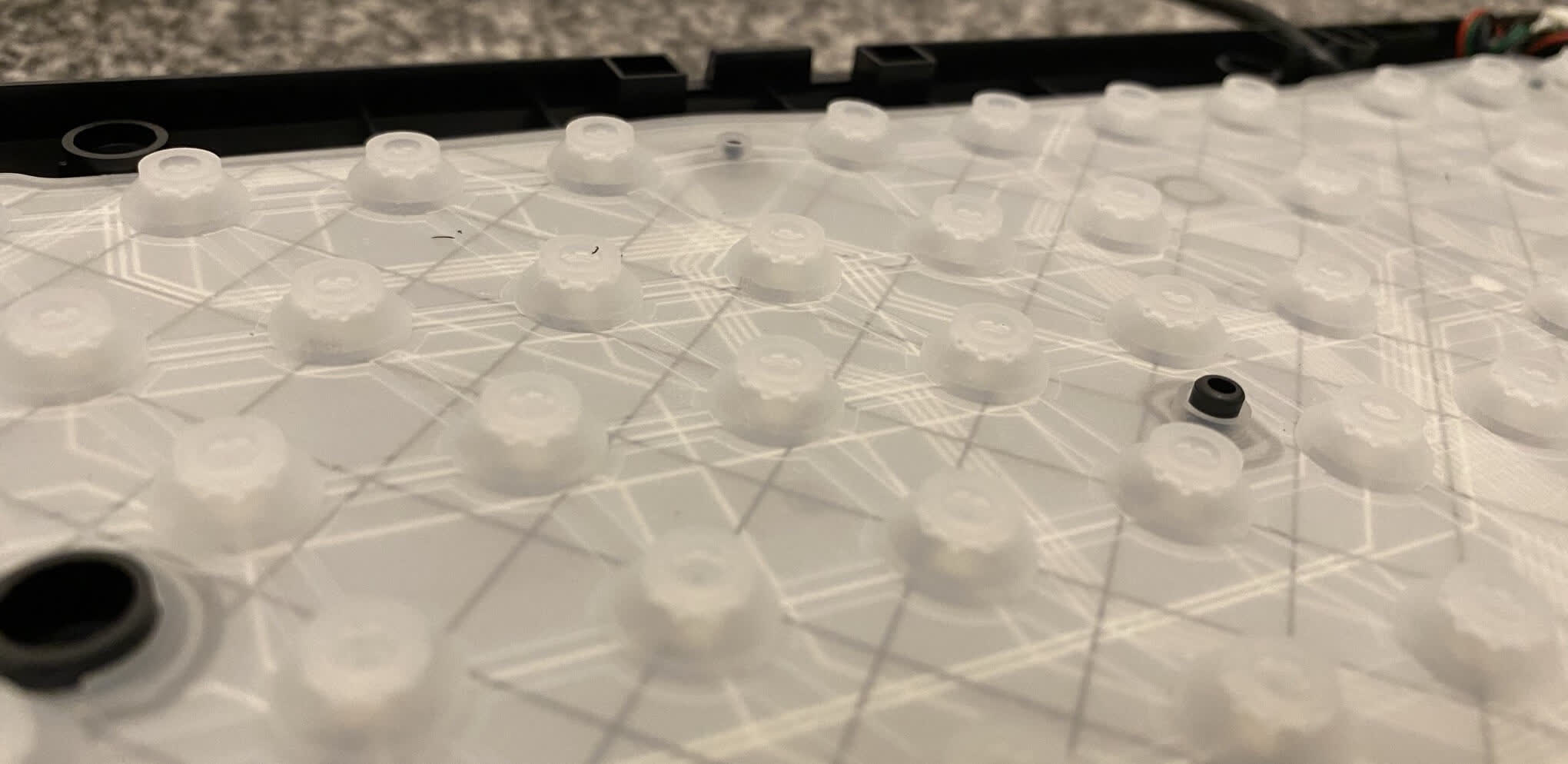
It does arrive pretty tranquillity to use, and then if yous share part infinite with lots of people, these types of keyboards tin be blessing.
Removing the silicone layer presents us with a fix of three plastic sheets: ii provide the 'switch contacts' and the third helps to divide them, preventing any simulated readings.
Pressing a key pushes the membranes together so that the 'dots', underneath that key, then connect -- the result is a closed circuit, which is picked up by a suitable chip.

If nosotros follow the traces in the membranes to the pocket-size circuit board, we can see that there's a total of 26 traces. They're arranged in such a way that multiple dots are along ane trace in, for case, the top membrane, only the corresponding dots in the lesser membrane are on separate traces.
It might seem to be overly circuitous, only it's actually far simpler than having private traces for every fundamental. In this model, the connections aren't permanently attached to the excursion board (helping to lower costs), so it has to exist clamped firmly against the membranes to ensure a proper connexion is present.
The board also houses a couple of LEDs to indicate when sure keys accept been pressed -- namely the Caps, Num, and Scroll locks.
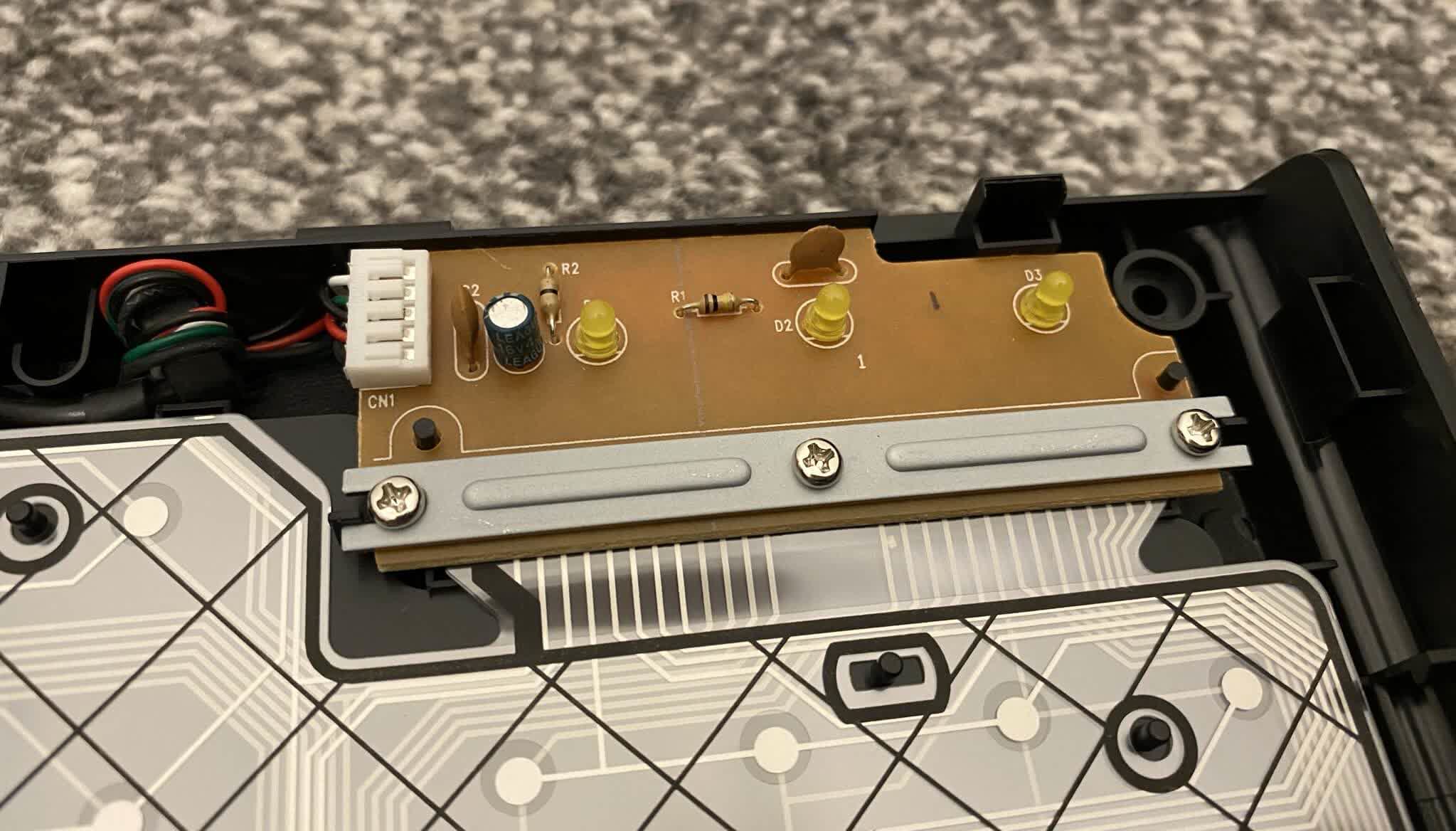
Flipping the circuit lath over shows where the controlling bit lies. Unfortunately, it was sealed under a hard plastic cap (to seal it confronting liquid spills) and information technology wasn't possible to remove it, without damaging the residue of the board.
The bit, though, will be a standard USB HID (human being interface device) microcontroller, of which there are thousands on the market (example).
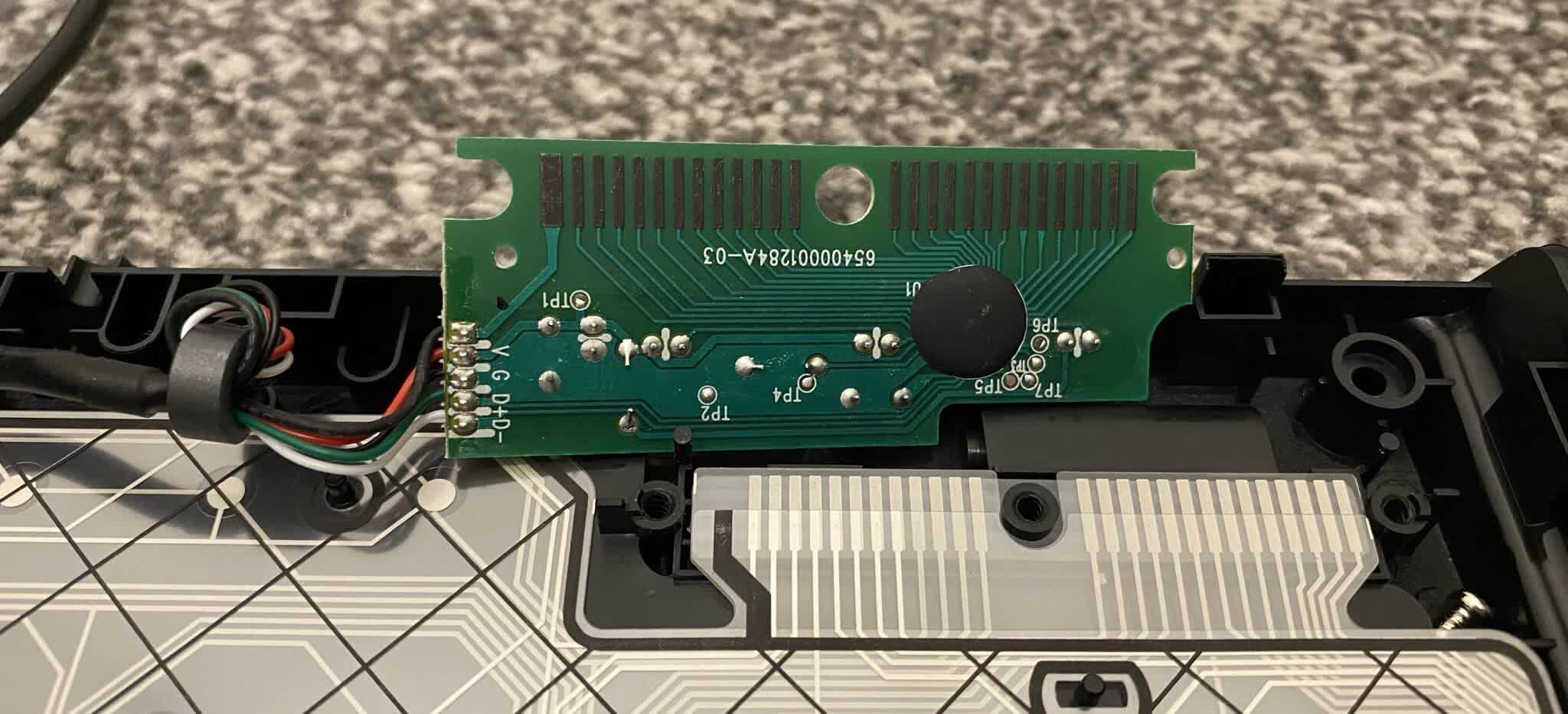
These types of keyboards can last for years earlier running into problems. When this does occur, it's often to practice with the connecting dots -- the abiding pressing and releasing slowly wears them abroad, until they eventually go so worn that they no longer make a proper contact.
At that indicate, you're left with either replacing the membranes, or as most people practise, send the keyboard off to electronics heaven and purchase a new i. But of course, non every keyboard costs a scattering of dollars or uses membranes.
Mechanical keyboards are a unlike category that tends to exist at the other finish of the cost spectrum and there's a good reason for this.
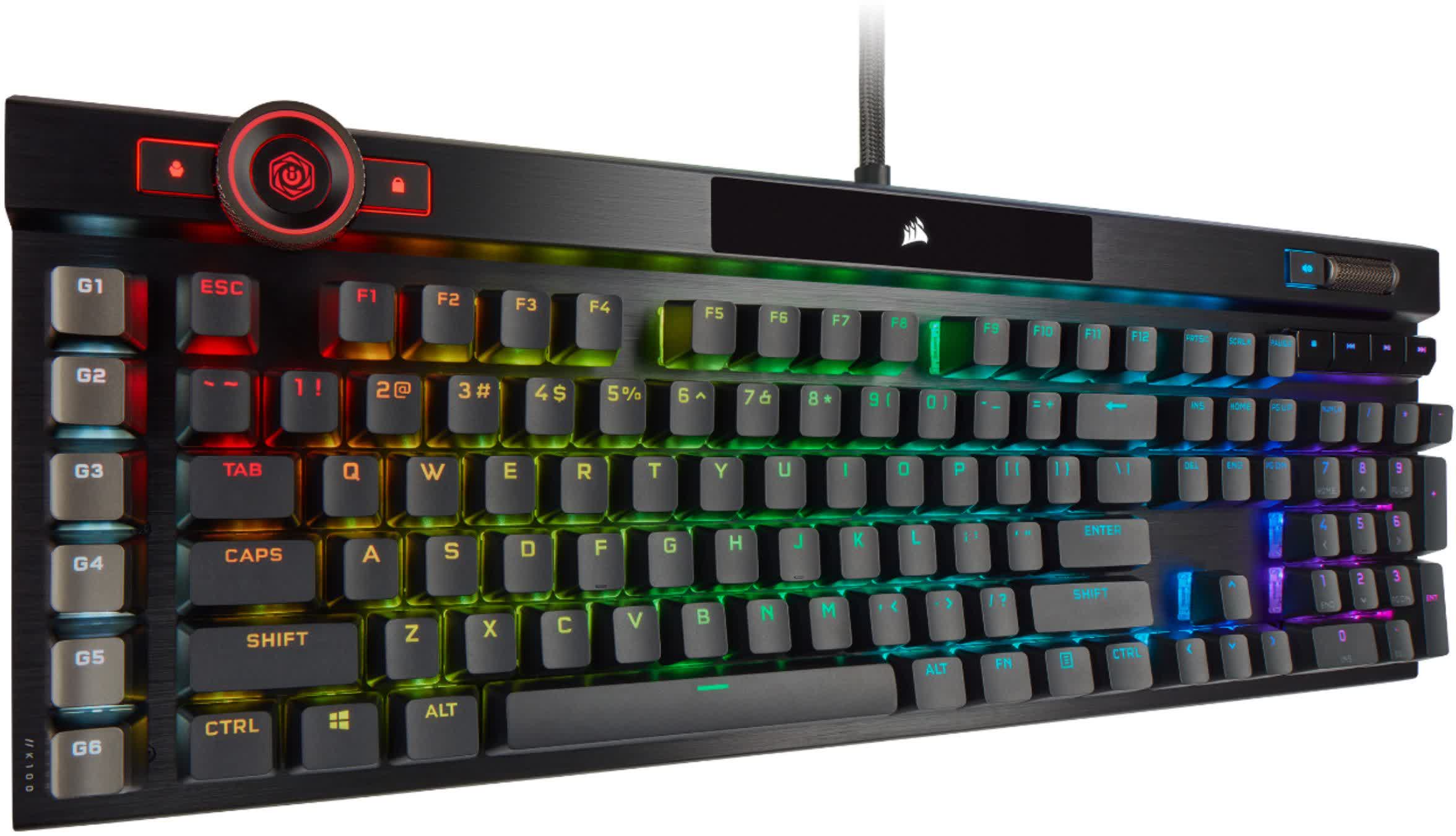
Shown higher up is Corsair's K100 RGB mechanical keyboard, with a somewhat astonishing cost tag of $210. Not all models of this ilk are so expensive, but the design and feature set is very common these days.
Underneath each key lies an private microswitch organization. The K100 nosotros're looking at is using those made by famous German supplier Red. Cherry MX switches accept somewhat of a mythical reputation just at the cease of the twenty-four hours, they're just a well made switch.
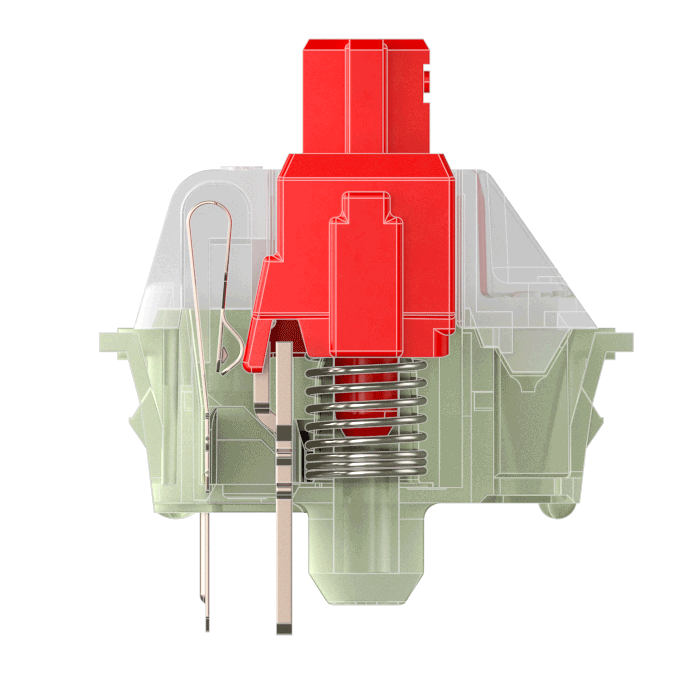
Cherry makes a wide range of switches, each with different strengths and sizes of springs, to give different levels of feel. The designs also vary on the basis of how far they need to exist pressed before the contact is activated and whether or non any audible feedback is generated.
Because of the moving parts, mechanical keyboards have a distinctive 'clatter' to them (let solitary when used in acrimony). The use of switches makes the keyboard more responsible and tactile when compared to its membrane counterparts.
Which mechanical switch is which?
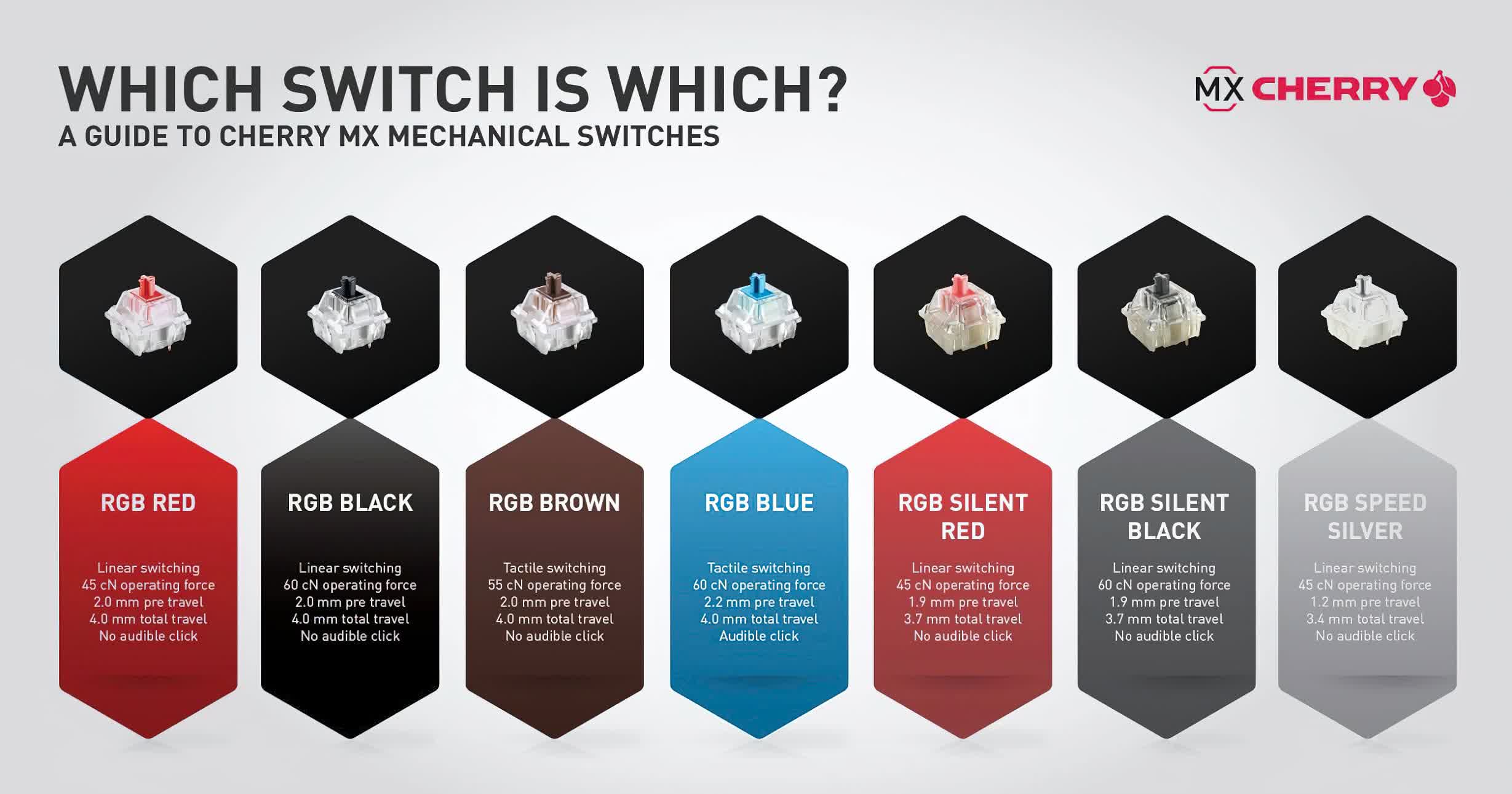
The boom in the inclusion of RGB LED lighting in PC components isn't to everyone'southward sense of taste, merely there are some genuine benefits when it comes to keyboards: adjustable backlighting allows you to cull a color best suited to your needs and you lot can besides set a particular color key combination (when per-key RGB is available) that can be useful for a given application or game.
Some keyboards could be considered hybrids using a combination of mechanical and membrane, especially those found in laptops. These devices don't have the space for fully mechanical switches, but manufacturers have designed structures to requite membrane keys a more than rigid and predictable feel to them.
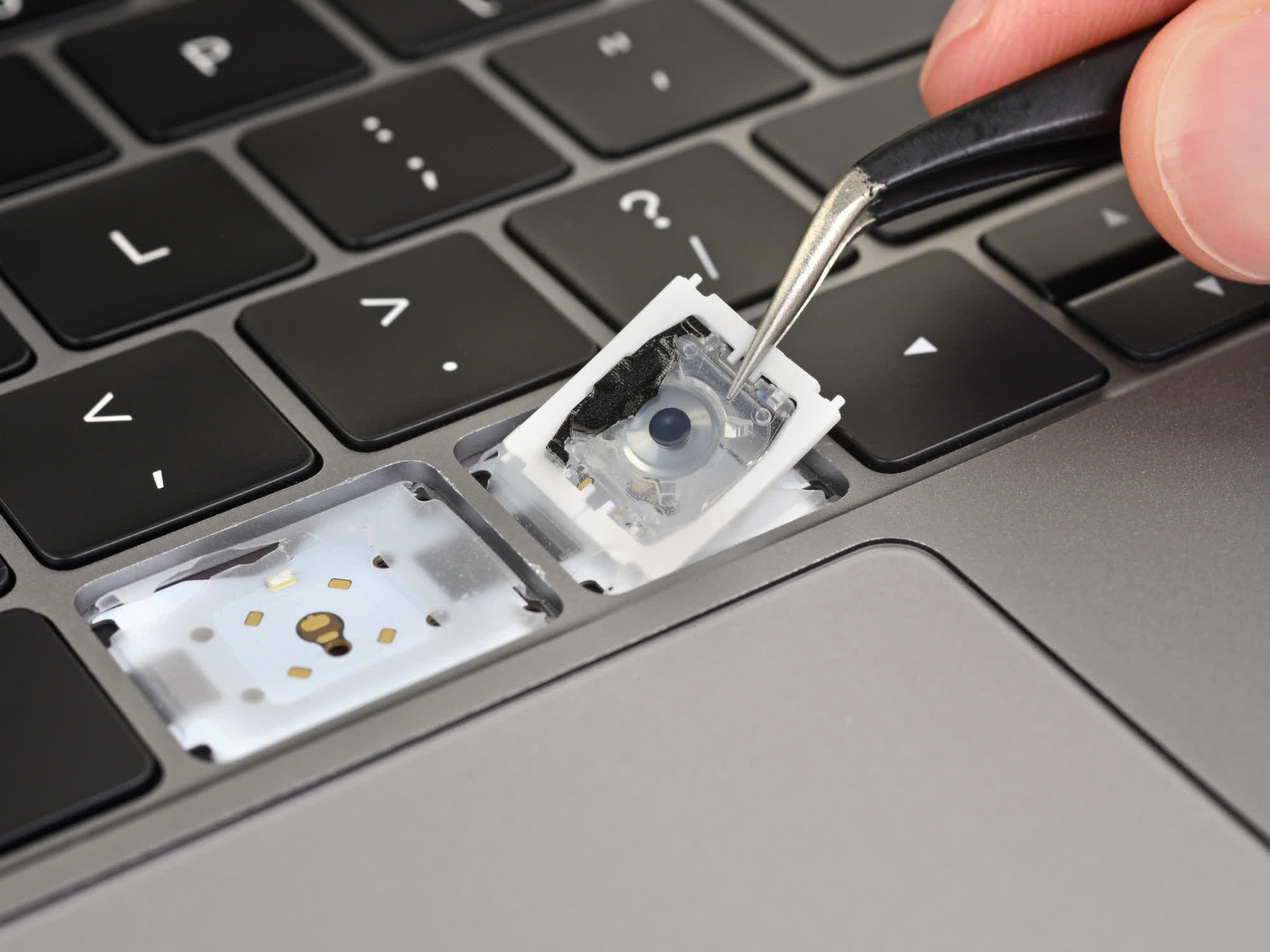
Naturally, this adds to the manufacturing toll, and in the case of Apple's system shown in a higher place, it's not been without bug -- just for many users, the addition of mechanical systems to improve the experience and feedback in laptop keyboards has been welcomed.
Nosotros won't say much near ergonomic keyboards, simply because their internals are the aforementioned equally those we've covered higher up. They can differ purely on the basis of how the keys are arranged across the lath, to ease strain on wrists and forearms during long periods of utilise.
We all have our favored make of mouse and keyboard, and our choices are always adamant past how the production feels in employ. This is generally about the exterior, of class, but the internals play a function, too.
And there's so much more...
Mice and keyboards are non the merely input devices for computers -- there are gamepads (which we'll exist dissecting next), flight sticks, trackballs, steering wheels, 6DOF devices, graphics tablets, trackpads and touchscreens, to name but a few. These just handle direct physical inputs and there are others that tin runway eye movement or entire bodies.
Only fifty-fifty with all the electronic wizardry that'south available for detecting an input, there's an eminent amuse to the simplicity of a mouse and keyboard combination.
Recommended reads:
- The Best Keyboards
- Build Your Ain Mechanical Keyboard Project
- Weird Keyboard Layouts: A Showcase
Shopping Shortcuts
- Das Keyboard 4Q on Amazon
- Corsair K95 RGB Platinum on Amazon
- Logitech Wireless Illuminated K800 on Amazon
- Corsair K100 RGB on Amazon
Masthead credit: Chris J. Davis
Source: https://www.techspot.com/news/88368-anatomy-keyboard.html
Posted by: bowlinexes1998.blogspot.com


0 Response to "Anatomy of a Keyboard"
Post a Comment